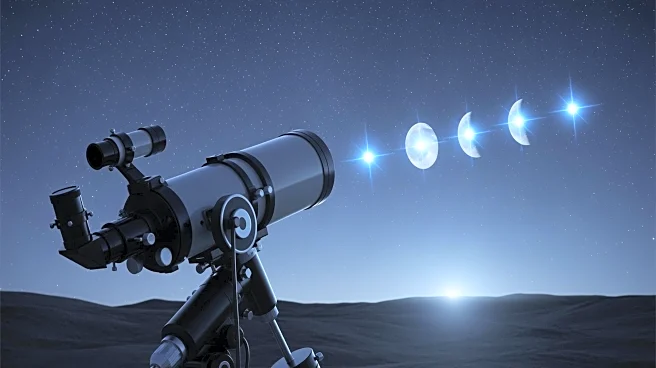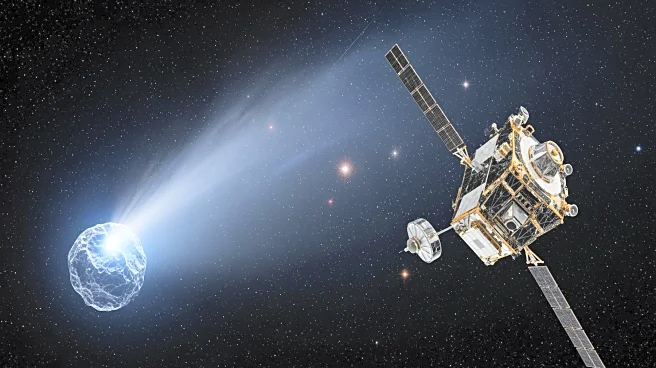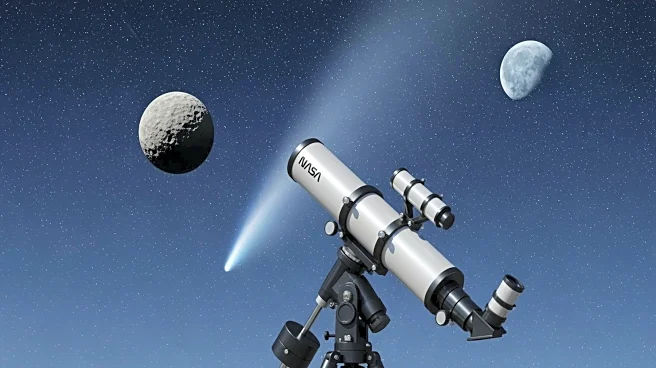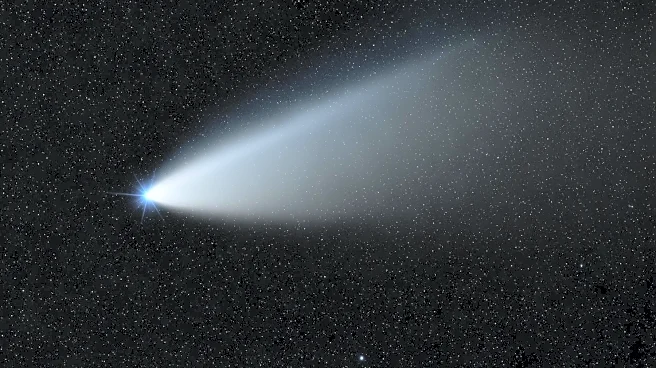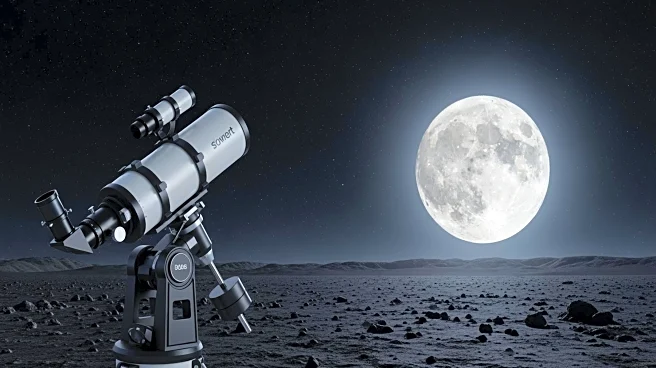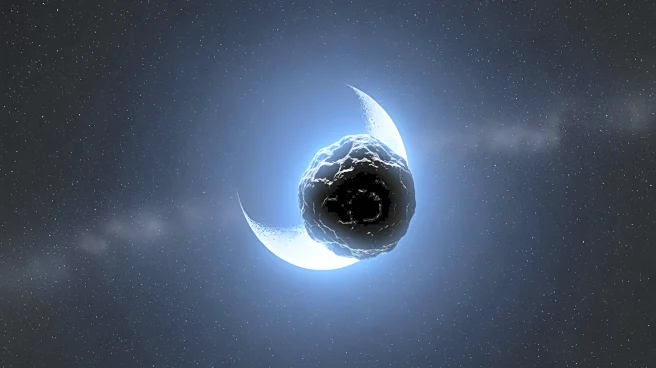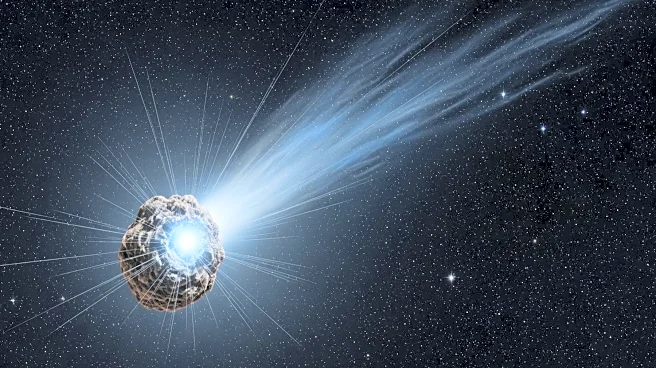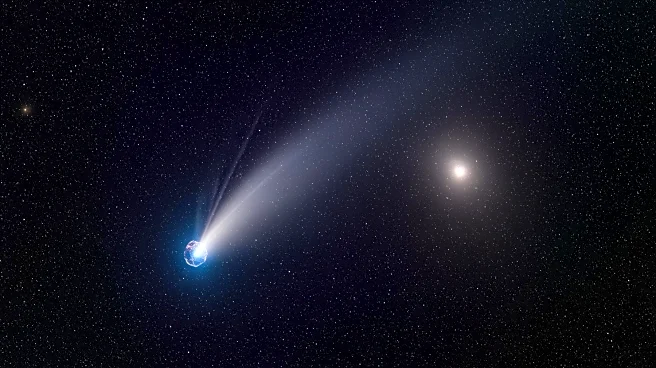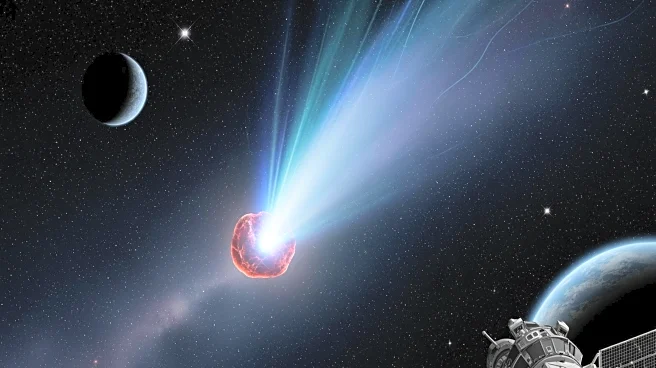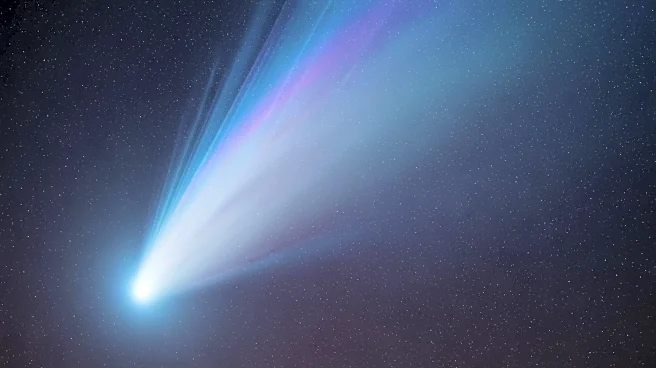What's Happening?
A new study led by Darryl Seligman from Michigan State University examines the potential impact risk of interstellar objects (ISOs) on Earth. The research focuses on the distribution and velocities of ISOs that could collide with Earth, using simulations
to model their behavior. The study suggests that ISOs are more likely to come from the solar apex and the galactic plane, with higher velocities from these directions. However, those that could impact Earth tend to have slower velocities due to the Sun's gravitational influence. The research also highlights seasonal variations in impact risk, with faster ISOs more likely to arrive in spring and more frequent potential impactors in winter.
Why It's Important?
Understanding the risk posed by interstellar objects is crucial for planetary defense and the development of strategies to mitigate potential impacts. The study provides valuable insights into the distribution and behavior of ISOs, which can inform future observations and research efforts. As the Vera Rubin Observatory begins its Legacy Survey of Space and Time, astronomers will be able to gather data that could support or challenge the findings of this study. The research contributes to the broader field of astronomy by enhancing our understanding of the dynamics of interstellar objects and their interactions with our solar system.
What's Next?
The findings of this study will guide future observations and research efforts, particularly with the upcoming Vera Rubin Observatory. As astronomers acquire more data on ISOs, they will be able to refine models and predictions about their behavior and impact risk. The study also opens up opportunities for further research into the kinematics of interstellar objects and their potential sources. Continued collaboration among international research teams will be essential in advancing our understanding of these celestial bodies and their implications for Earth.
Beyond the Headlines
The study raises questions about the long-term implications of interstellar objects on Earth's geological history and the potential for future impacts. It also highlights the need for advancements in detection and monitoring technologies to better understand and mitigate the risks posed by these objects. The research underscores the importance of international cooperation in addressing global challenges related to space exploration and planetary defense.


